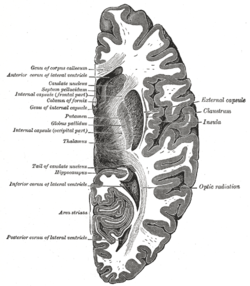This article needs to be updated. The reason given is: Statements about "recent" developments are not defined, and many of the papers cited are from over 20 years ago as of 2024..(February 2024) |
Extinction is a neurological disorder that impairs the ability to simultaneously perceive multiple stimuli of the same type. Extinction is usually caused by damage resulting in lesions on the posterior parietal cortex (PPC) and more specifically, due to the damage to the decision-making circuits within the PPC. [1]
